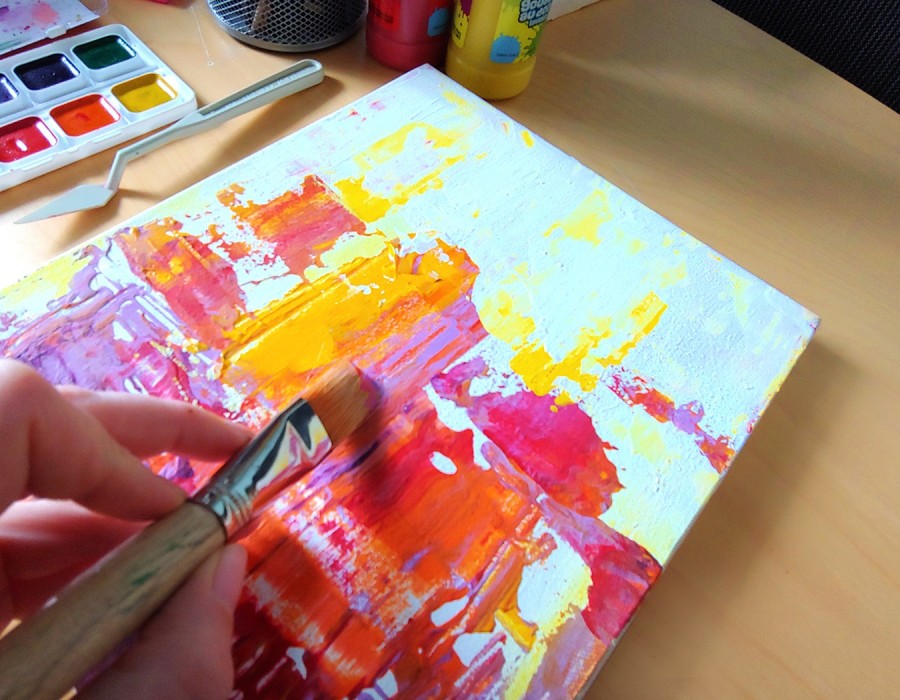What Is Art Therapy?
Art therapy is a form of psychotherapy that uses various art forms—such as painting, drawing, sculpture, or collage—as a means of communication and self-expression. It doesn’t require artistic skills but instead focuses on the process of creating art as a way to explore emotions and work through psychological challenges.
In Quebec, art therapy is practiced by certified therapists trained to guide individuals through their creative processes, helping them uncover deeper emotional truths and work toward healing. It is particularly useful for individuals who find verbal communication challenging, allowing them to express their feelings through colors, shapes, and forms rather than words.
The Rise of Art Therapy in Quebec
The growing popularity of Art Therapy in Quebec reflects a broader trend toward alternative approaches to mental health treatment. As society becomes more aware of mental health issues, including anxiety, there is an increasing demand for holistic and creative therapies that complement traditional methods such as talk therapy or medication.
In Quebec, art therapy has gained recognition in hospitals, schools, rehabilitation centers, and private practices. Whether it is used for children dealing with trauma, adults coping with chronic stress, or elderly individuals facing memory loss, art therapy offers a safe space for emotional expression and personal growth. The province has embraced this practice as part of a larger movement toward mental wellness, with several institutions offering professional training in art therapy.
How Art Therapy Helps in Treating Anxiety
Anxiety is a common mental health issue that affects millions of people worldwide. For many, it manifests as constant worry, fear, and nervousness that can interfere with daily life. Art therapy has proven to be highly effective in managing anxiety by offering a non-verbal outlet for emotions, reducing stress, and promoting mindfulness.
Art Therapy for Anxiety involves engaging in the creative process, which helps individuals focus on the present moment rather than being consumed by anxious thoughts. Creating art requires concentration and physical activity, which shifts attention away from worries and onto the task at hand. This state of flow can induce relaxation and calm the mind, offering relief from the symptoms of anxiety.
Moreover, the therapeutic relationship between the client and the therapist during the art-making process plays a crucial role in alleviating anxiety. The therapist helps the individual explore the emotions behind their artwork, facilitating self-awareness and insight into the root causes of their anxiety. This can lead to more effective coping strategies and long-term emotional resilience.
Art Therapy Techniques for Anxiety
Several art therapy techniques are used to manage anxiety, each tailored to the individual’s needs and preferences. One of the most popular methods involves drawing or painting mandalas—geometric designs that are often used in meditation. The repetitive patterns and focus required to create these designs can help calm the mind and reduce anxiety.
Another effective technique is creating abstract art, where individuals are encouraged to let go of perfectionism and expectations. By using different colors and textures, they can express emotions such as fear, frustration, or sadness in a safe and supportive environment.
For those dealing with anxiety linked to trauma or negative experiences, collage work can be particularly helpful. By cutting out and assembling images, individuals can symbolically reconstruct their experiences, giving them a sense of control over their emotions.
The Role of Art Therapy in Quebec’s Mental Health Landscape
In Quebec, the integration of Art Therapy for Anxiety into the mental health care system reflects a broader commitment to offering diverse therapeutic options. Many mental health professionals in the province recognize the value of creativity in healing, making art therapy accessible to a wide range of individuals, from children to adults.
Schools in Quebec have also adopted art therapy programs to help students manage stress, anxiety, and emotional difficulties. These programs have proven especially beneficial for children who may struggle to articulate their feelings verbally. By providing a creative outlet, art therapy allows them to express complex emotions in a non-threatening way.
Furthermore, the province’s hospitals and rehabilitation centers have incorporated art therapy into treatment plans for patients recovering from illness or injury. Whether it’s helping patients deal with chronic pain, manage the psychological effects of a diagnosis, or cope with the emotional toll of recovery, art therapy has become an essential tool in holistic health care in Quebec.
Why Art Therapy Matters for Anxiety Relief
The therapeutic benefits of art therapy extend beyond mere distraction from anxious thoughts. Engaging in creative activities fosters self-expression, builds confidence, and promotes emotional healing. For those struggling with anxiety, it offers a way to externalize overwhelming emotions, making them more manageable and less frightening.
Unlike traditional therapies that rely heavily on verbal communication, art therapy allows individuals to explore their inner worlds through imagery and symbols. This process can reveal unconscious thoughts and feelings that contribute to anxiety, offering valuable insights and facilitating deeper healing.
In Quebec, the combination of professional expertise and the growing appreciation for creativity has positioned art therapy as a vital component of mental health care. For individuals seeking alternatives to conventional treatments, art therapy offers a unique and effective way to manage anxiety and promote long-term well-being.






Comments